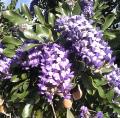
DMT-Nexus member
Posts: 102 Joined: 12-Oct-2008 Last visit: 25-Mar-2020 Location: Tropical Rainforest in Maui
|
im pretty sure i live in a perfect area/climate to grow caapi. Was thinking about propergating some caapi cuttings in pots and when they get healthy and well rooted hike em up in the jungle find a good spot and transplant them in the ground and forget about em for a while and later on in time come back to harvest. is this a bad idea?
|
|
|
|
|

DMT-Nexus member
Posts: 1925 Joined: 28-Apr-2010 Last visit: 07-Jul-2024
|
Sounds like a pretty good idea to me.  Convert a melodic element into a rhythmic element...
|
|
|

.

Posts: 6739 Joined: 13-Apr-2009 Last visit: 10-Apr-2022
|
I have no idea what the ecological impact of this would be. I'd do it unless someone offered me some good reasons not to.
|
|
|

bird-brain

Posts: 959 Joined: 26-Apr-2010 Last visit: 30-Oct-2020
|
You have a perfect climate to grow cappi means that cappi has a perfect climate to thrive. Often times plants from another part of the world will have an advantage over local flora (the fauna isn't equipped to deal with it). It's also a vine. Typically these grow quite fast, and prevent local fauna from receiving photons which inhibits their growth. Keep in mind that these wonderful compounds are often insecticides as well . So if it DOES thrive then you may have a ripple effect throughout your local ecosystem. This is all speculation, and it may be fine. I wouldn't do it though. I think I already mentioned in chat that I will shove a boot down your throat if you do this. That offer still stands. blooooooOOOOOooP fzzzzzzhm KAPOW!
This is shit-brained, this kind of thinking.
Grow a plant or something and meditate on that
|
|
|

DMT-Nexus member

Posts: 2635 Joined: 27-Jul-2009 Last visit: 28-May-2018 Location: Pac N.W.
|
I would do it personally. Having seen caapi in the wild it doesn't appear like it could have an effect on other plants. It doesn't have many leaves so I disagree with proto that it would rob plants of photons or water. Its a pretty chill vine that causes no harm to the tree it grows on. The same could be said of different psillicyben that have been spread across the world intentionally and ive never read about them effecting the ecosystem. Mckenna's farm in Hawaii is quite a decent size and has been thriving for decades now. Hawaii keeps a close eye on evasive species and nothing has ever been reported there. I doubt it would be a problem but im certainly not a botanist. Couldn't you just plant it in your yard or somewhere you could keep an eye on it? Its not illegal. I am not gonna lie, shits gonna get weird!Troubles Breaking Through? Click here. The Art of Changa. making the perfect blend.
|
|
|

DMT-Nexus member
 
Posts: 12340 Joined: 12-Nov-2008 Last visit: 02-Apr-2023 Location: pacific
|
from what I understand this has already taken place in hawaii. Cappi has for some time gone native there. Long live the unwoke.
|
|
|

bird-brain

Posts: 959 Joined: 26-Apr-2010 Last visit: 30-Oct-2020
|
olympus mon wrote:Its a pretty chill vine that causes no harm to the tree it grows on. The plants it grows on have been living with Caapi for a looooooooooong time. They know how to handle it. blooooooOOOOOooP fzzzzzzhm KAPOW!
This is shit-brained, this kind of thinking.
Grow a plant or something and meditate on that
|
|
|

ThGiL fO TiRipS
Posts: 2021 Joined: 26-Feb-2011 Last visit: 21-Aug-2025 Location: Earth
|
stoneyone wrote:im pretty sure i live in a perfect area/climate to grow caapi. Was thinking about propergating some caapi cuttings in pots and when they get healthy and well rooted hike em up in the jungle find a good spot and transplant them in the ground and forget about em for a while and later on in time come back to harvest. is this a bad idea? sound like very good idea to me and do not forget to send your brothers on nexus some nice samples  We are each of us angels with only one wing, and we can only fly by embracing one another.
*********
We are all living in our own feces.
|
|
|
DMT-Nexus member
Posts: 26 Joined: 08-Jun-2012 Last visit: 26-Aug-2018 Location: Oz
|
Caapi grows by forming a canopy over the top of the tree it has scrambled up on. Many tropical vines grow like this. This can be an incredibly destructive mechanism in some rainforests. In the daintree rainforest in northern australia one of the biggest threats to what is the worlds greatest density of biodiversity is the captain cook vine which grow in exactly this manner. It shades out the host tree, which eventually succumbs and collapses. This leaves a large tract of exposed rainforest soil which is already covered in thousands of vine seedlings. The additional light favours the vine and this now grows on all trees surrounding the opening. After just 10 years this process can leave holes in the forest half a hectare in size -a forest thatw as previously weed free and had rainforest integrity.
There are two reasons why I think B.caapi will be worse than the captain cook vine in this regard.
1) The captain cook vine does not sucker or run along the rainforest floor. I have seen caapi run through forest floor mulch during the wet season at a rate of 50m in 3 months. It can do this in every direction. And at every node it can root and send up new shoots. That means in just one season the plant could spread to something like 100x100m, ie a hectare, if it has enough nutrients and water. I have personally seen it take over half a hectare and going up every tree in that area within 18 months. Eradicating it took 3 years of 6 monthly treatments as many rooted nodes would survive poisoning.
2) Caapi will produce winged seeds in the tropics. While captain cook vine seeds are heavy and round, and need to be transported by water or animals, the seeds of caapi vines can fly hundreds of meters in one go and can still cover more distance if they hit flowing water.
As much as I love the plant, I feel that growing it near important tropical ecosystems is very dangerous as it will invariably do a lot of damage and alter the ecology of these fragile systems in ways that are impossible to repair. Caapi grows quite distinctly different to most australian tropical vines which prefer to stay below or in the canopy rather than forming an umbrealla above it. Many trees will simply not cope with the shading or the weight.
It is much safer to grow this in subtropical climates where it is controllable and does not usually seed.
|
|
|

DMT-Nexus member

Posts: 1843 Joined: 28-Jun-2012 Last visit: 20-Jul-2021
|
Tabaluga, I'm happy you stayed!!!  + ---- + ---- + ---- + ---- + ---- + ---- + ---- + ---- DMT Nexus Research ---- + ---- + ---- + ---- + ---- + ---- + ---- + ---- +
|
|
|

DMT-Nexus member
Posts: 131 Joined: 06-Nov-2012 Last visit: 04-Oct-2014 Location: Hyperborea
|
I've seen it propagating in warmer climates by sending out runners along the ground. Sections of vine which touch the ground root. Although I've never seen it seed, after ten years, or reproduce this way, so I don't know that it would spread fast as a weed beyond it's planting site? Weeds vs useful plants is a difficult issue.
|
|
|
DMT-Nexus member
Posts: 61 Joined: 24-Nov-2009 Last visit: 17-Feb-2021 Location: Tropics
|
Irie, Well I've been cultivating Caapi for 4yrs or so, in optimum conditions. It can certainly grow fast & as T says, can been overbearing for host trees. My Alicia vine has just cracked it's mango tree host, in two! The caapi has all but smothered an orange, cashew & A.peregina.... I tend to keep unknown plants in potting bags, until I've had a chance to evaluate it's invasiveness! The Stigmaphyllon I have, spreads by root suckers. Which has proved to be quite an issue with the 4 vines that I put in the ground. I have several more that are still being retarded in pots.... For a plant that I have little or no knowledge of it's historical use for aya, I'm cautious to encourage it's propagation. If you're thinking about growing your vine in the wild, it would be wise to choose a isolated micro-climate area? As for cultivating it in the garden, I would definitely go for it and encourage friends to also cultivate it.... You can kinda keep control of it with heavy pruning (with a machete), and harvesting large growth, every 2-3yrs... But you may end up like me with several sacks of dried shredded material!!  I now compost 80+% of my caapi!!!  Respect, Z
|
|
|

DMT-Nexus member
 
Posts: 372 Joined: 29-Sep-2009 Last visit: 15-Feb-2024 Location: Diagonally parked in a parallel universe
|
I've heard stories that once the main trunk is cut the remaining parts of the plant up in the canopy can survive and spread amoeba-like around the canopy. This was specifically in Hawaii, and I don't know how true it is, but it seems within the range of possibility, so be careful. I'd go with Zaka's recommendations above. I already asked Alice.
|
|
|

DMT-Nexus member
Posts: 3207 Joined: 19-Jul-2011 Last visit: 02-Jan-2023
|
Zaka wrote:I now compost 80+% of my caapi!!!  i can compost it for you if you like. send it to me and i will make sure it is properly disposed of  My wind instrument is the bong
CHANGA IN THE BONGA!
樹
|
|
|

x-namwodahs

Posts: 528 Joined: 12-Nov-2009 Last visit: 28-May-2023
|
sounds like hyou could just have a constant caapi menstruum going on or something  They don't think it be like it is, but it do.
|
|
|
DMT-Nexus member
Posts: 61 Joined: 24-Nov-2009 Last visit: 17-Feb-2021 Location: Tropics
|
Irie,
In order to get nice big fat trunks, the vine starts fatting up once it's reached it's available apex, then return back down....
Still a speculation atm, the higher the fatter????
Trimming lesser shoots/branches also helps beef up the main trunk.....
Of the 20% remaining, keep maybe 5%, & ship the rest.....
Due to shipping restrictions, I can't ship whole vine(to US), but shredded is NOT a problem, hence the need for a shredder!
But the compost is real nice...
Respect,
Z
|